2015-06-22
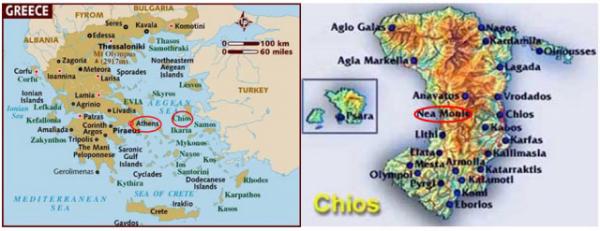
【Aiden in English】
The geography of a place is often the deciding factor that shapes its history. There wouldn't be an Egyptian civilization without the Nile River. Without the Euphrates and Tigris Rivers, there would be no Mesopotamia, including Turkey. And there wouldn't be Greece without the mountains. Yesterday, we visited the monasteries of Meteora, built on rock pillars 400 years ago. The theme continues today, although a few things have changed. Overnight, we sailed to Chios, the fifth-largest island in Greece, located near Anatolia. The Nea Moni of Chios we visited was built on "a cross-in-square plan with a large dome supported by squelches defining an octagonal space" in the 11th century A.D. Its interior was decorated with superb marble works and Byzantine mosaics on a gold background. As usual, it seemed just as isolated as the others, away from the town. This island with the Turks had a bloody history. The monastery served as a base when Barbary pirates invaded, and it was subsequently conquered by the Ottomans. What's interesting is how freedom was earned. In 1822, the Turks were tired of the rebellions that had been futile attempts at freedom. An admiral of the Ottoman Empire brought a thousand mercenaries and, with permission from the empire, demanded that they slaughter any person they saw. The mercenaries burned down villages and structures and slew everyone, no matter what age, gender, or social class. All in all, 25,000 people were killed, and another 30,000 were sold in slave markets. At the time, it cut off over 50 percent of the population. The mercenaries were also driven by the extra payment for every ear or nose they brought back. The cruelty inspired the famous paintings "Massacre at Chios" and "The Death of Sardanapalus" by Eugène Delacroix, a French Romantic painter. The horrifying scenes motivated and captured the attention of the rest of Europe. What didn't seem like 25,000 people being killed can be gone without notice, either? The entire continent of Europe became enraged at such a commendation. Lord Byron and Victor Hugo joined their voices in protest. When Greece fought for its freedom after the massacre, it had many allies to back it up, turning the tables. In 1832, Greece gained independence from the Ottoman Empire, which had ruled the country for nearly 400 years. The Ottoman Empire began to break apart, piece by piece. I'd like to know where Turkey stands now, and I prefer that the Greek people be in charge of their own culture since they have inhabited this land for so long and know it best. The price of conquering is the death toll on both sides. It is also a fact that you make enemies, which brought the Turks to their knees. It looks like being the bully at school. As soon as one kid stands up, the bully's enemies follow. Well, there is a payback. In 1990, Nea Moni of Chios was inscribed as a UNESCO World Heritage Site. 【红霞译】
一个地方的地理环境足以构成历史发展的决定性因素。没有尼罗“河流”河,根本谈不上古埃及文明;没有幼发拉底“溪流”和底格里斯“湍急”两河流域,包括土耳其在内的美索不达米亚“两河间”充其量只是天方夜谭;同样地,没有圣山灵智,希腊难以发展到充满神奇色彩的国度。
昨天,我刚参观了具有400年悠久历史的梅特奥拉“天空之柱”,今日又继续欣赏修道院,只不过彼此背景略有差异。游轮经过一夜航行,带我们来到靠近小亚细亚希腊第五大岛──希俄斯“乳香树脂”,眼前这个11世纪拜占庭“东罗马”式新修道院建在“广场中间呈十字形,巨大穹窿屋顶由突角拱支撑,形成八角结构”,内部墙壁全部使用大理石和马赛克,并镶有黄金装饰。不独有偶,希俄斯新修道院远离闹区,地脚偏僻。
希俄斯岛与突厥族之间有本血泪史,新修道院曾被巴巴里“野蛮人”海盗和奥斯曼“强大”军队用作战事基地,对希俄斯人来说,自由来之不易。1822年,突厥人对岛上居民频繁为争取独立而进行的不懈斗争深感烦恼,于是,奥斯曼帝国海军上将接到指令,亲自带领上千名雇佣兵对当地民族进行残酷屠杀,村庄被毁房屋被炸,妇幼老少无人得以幸免,最后25,000人丧失性命,另外30,000人被逼作奴隶背井离乡,全岛人口因此而骤减了50%。雇佣兵越杀越凶,因为每上缴一只耳朵或一个鼻子都能请功领赏。他们这种灭绝人性的恶行激发了法国浪漫主义画家尤金·德拉克洛瓦强烈愤慨,《希俄斯岛的屠杀》和《萨达那帕拉斯“亚述国王”之死》骇人听闻的场面引起全欧洲大陆极大关注,25,000人的鲜血岂能白流,英国诗人拜伦勋爵和法国作家雨果立刻加入伸张正义的行列之中。大屠杀之后,希腊人争取自由的心愿得到众多欧洲盟友的支持,在历经四个世纪突厥族统治之后,希腊终于1832年获得独立,奥斯曼帝国逐渐日落西山,直至最后土崩瓦解。坦率地说,我喜欢土耳其现在这种状态,希腊民族本应掌管自己的事物,因为这里早已成为世世代代生活的家园,所以他们才是这片土地的主人。 其实暴君统治到处树敌造成两败俱伤,得到多助失道寡助,结果无法逃脱像突厥族一样失败的命运。学校时有类似事件发生,一旦有肇事者欺负学生,必然会引起公愤,过街老鼠人人喊打。 1990年,希俄斯岛的新莫尼修道院被联合国教科文组织纳入《世界遗产名录》。
Today in History(历史上的今天):
2015: Homer's Stone on Khios, Greece(希腊希俄斯“开放”岛·荷马岩) 2015: Painting & Mastic Gum of Khio GRC(希腊希俄斯岛·彩绘和乳香树脂) 2015: Medieval Fortified Village of Khios(希腊希俄斯岛·中世纪土围子) 2014: California Pizza Kitchen(热炉皮萨饼屋)
2011: 二年级夏令营(2nd Grade Summer Camp) 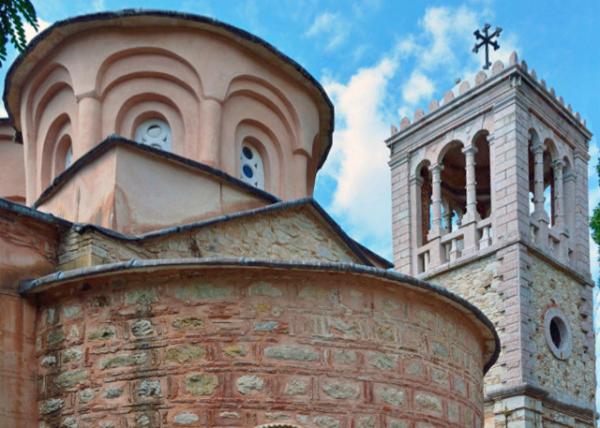 Nea Moni of Chios from the 11th-Century, Listed as a UNESCO World Heritage Site Nea Moni of Chios from the 11th-Century, Listed as a UNESCO World Heritage Site
(十一世纪的希俄斯岛新修道院·1990年被联合国教科文组织纳入《世界遗产名录》) 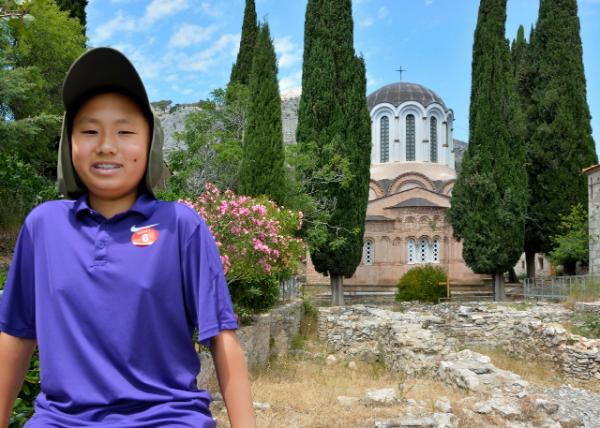 Cypress Tree (柏树 06-22-2015) Cypress Tree (柏树 06-22-2015)

Byzantine Mosaic (拜占庭镶嵌画 06-22-2015) 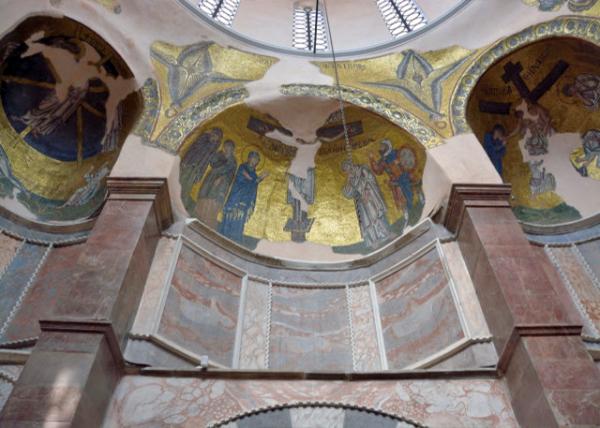 The Finest Examples of Macedonian Renaissance Art in Greece The Finest Examples of Macedonian Renaissance Art in Greece
(希腊 "马其顿文艺复兴" 最好的艺术典范) 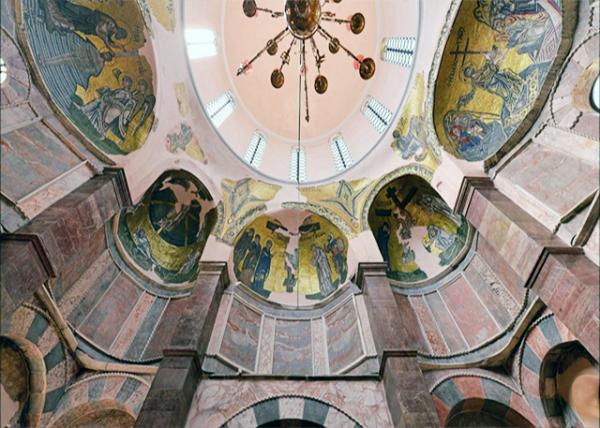 Gold Backgrounds for the Extensive Use of Gold Tesserae in the Mosaics, Reflecting Light & Enhancing the Depictions w/ a Sense of Transcendence & Spirituality Gold Backgrounds for the Extensive Use of Gold Tesserae in the Mosaics, Reflecting Light & Enhancing the Depictions w/ a Sense of Transcendence & Spirituality
(金色背景·镶嵌艺术作品中大量使用金色小方块,以反射光线并增强描绘的超越感和灵性) 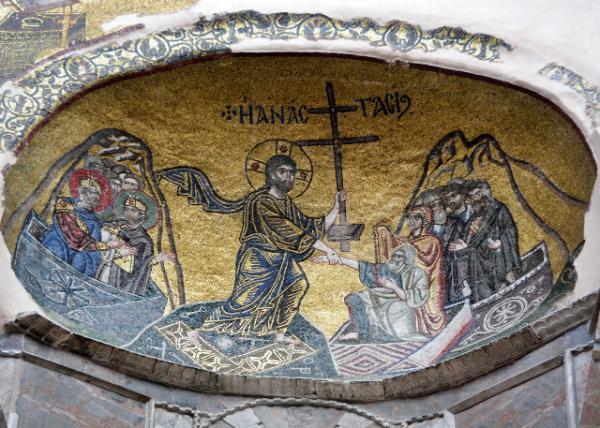 Why Christ Descended into Hades: Exploring the Theological Significance of Christ's Descent into the Realm of the Dead Why Christ Descended into Hades: Exploring the Theological Significance of Christ's Descent into the Realm of the Dead
(《基督为何堕入地狱》·探讨基督降入死者的神学意义) 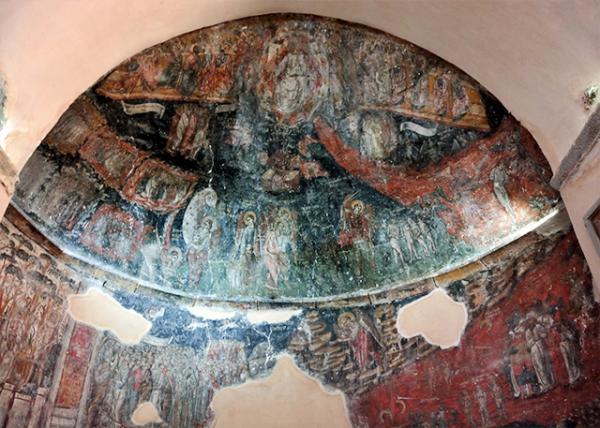 Appealing Fresco Restoration Underway Appealing Fresco Restoration Underway
(极富感染力的壁画修复正在进行中)
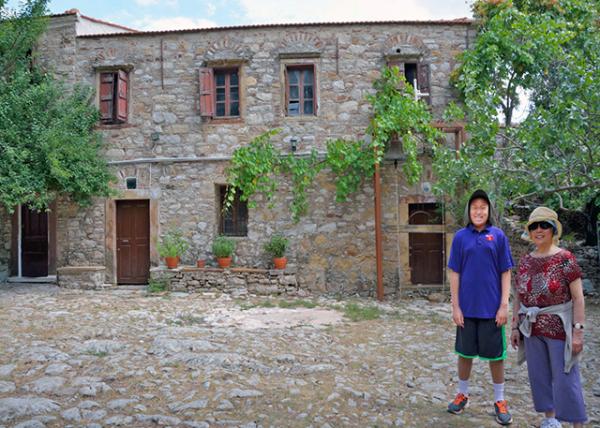 Monastery Museum (修道院博物馆 06-22-2015) Monastery Museum (修道院博物馆 06-22-2015)
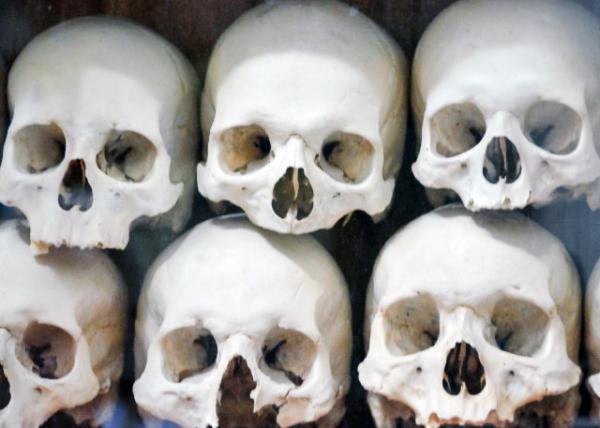 Ossuary, the Victim Skull of the Ottoman Sack in 1821 Ossuary, the Victim Skull of the Ottoman Sack in 1821
(藏骨堂·1821为摆脱奥斯曼帝国统治而死的开放岛人颅) 
Eugene Delacroix The Massacre at Chios 1824 (欧仁·德拉克洛瓦《希俄斯岛大屠杀》| 1824年) 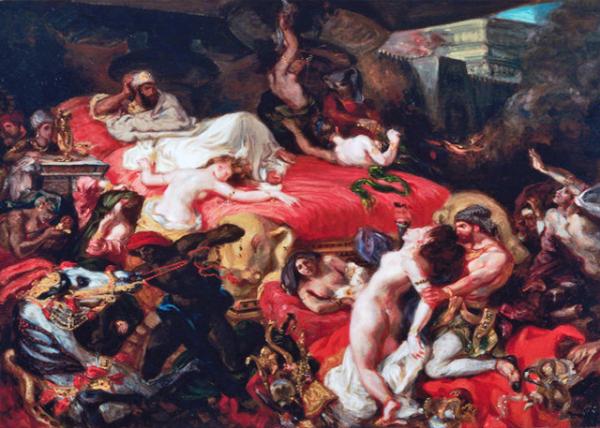 Eugene Delacroix The Death of Sardanapalus 1827 Eugene Delacroix The Death of Sardanapalus 1827
(欧仁·德拉克洛瓦《萨达那帕拉斯之死》| 1827年)
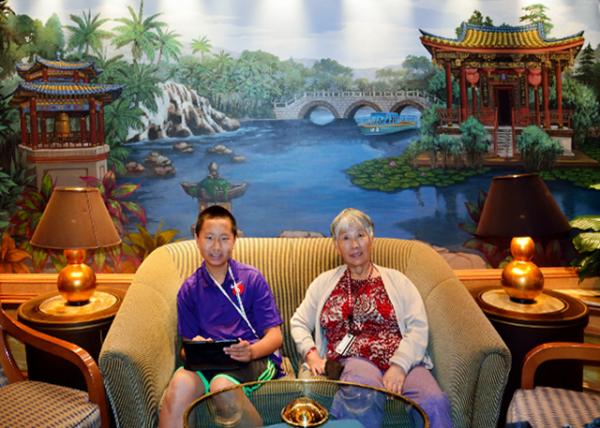 Explorers Lounge of Emerald Princess Explorers Lounge of Emerald Princess
(“公主·翡翠”号游轮——探险者休息室 06-22-2015) 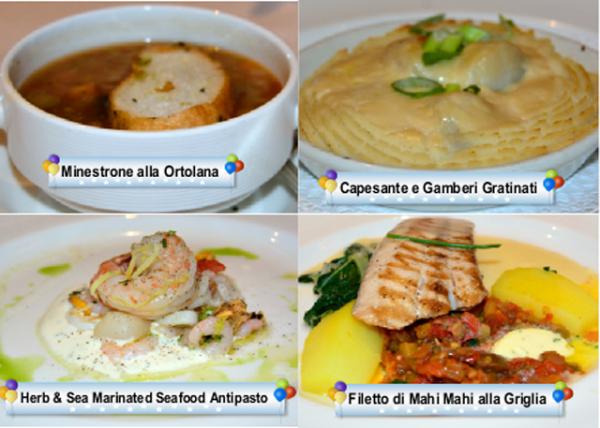 晚餐:传统意大利蔬菜汤与香蒜面包干、奶油焗海带子虾配蓬松鲜奶油土豆、虾鱿鱼黑贻贝配奶油柠檬乳液、烤鯕鳅鱼片 晚餐:传统意大利蔬菜汤与香蒜面包干、奶油焗海带子虾配蓬松鲜奶油土豆、虾鱿鱼黑贻贝配奶油柠檬乳液、烤鯕鳅鱼片
 意面豆汤、杂菜和嫩菠菜与脆熏猪肉羊奶酪和松子、新鲜番茄酱意粉与肉丸、提拉米苏 意面豆汤、杂菜和嫩菠菜与脆熏猪肉羊奶酪和松子、新鲜番茄酱意粉与肉丸、提拉米苏
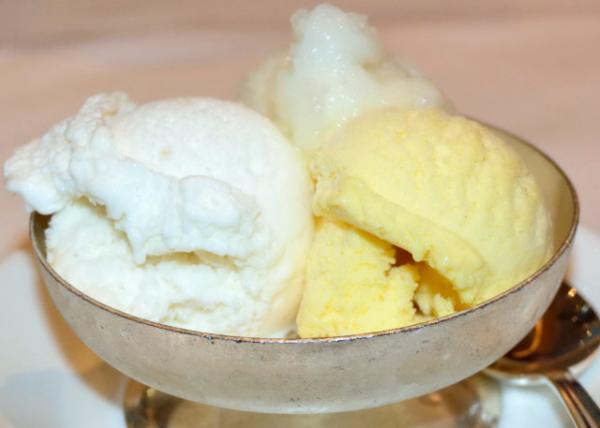
Gelato allo Zabaglion, Gelato al Torroncino & Sorbetto al Limoncello di Sorrento (三色手工冰激凌·鲜果雪酪、牛轧糖与柠檬酒冰糕) Crosslinks(相关博文): Greece(出游希腊)
Europe(欧洲掠影) 6th Grade(初中一年级)
|
